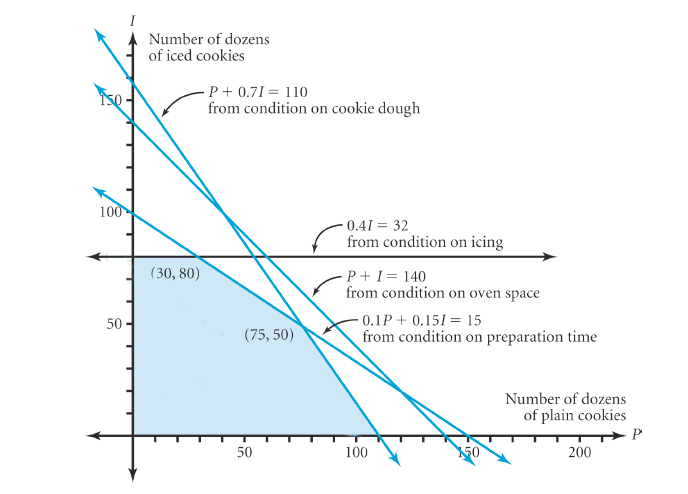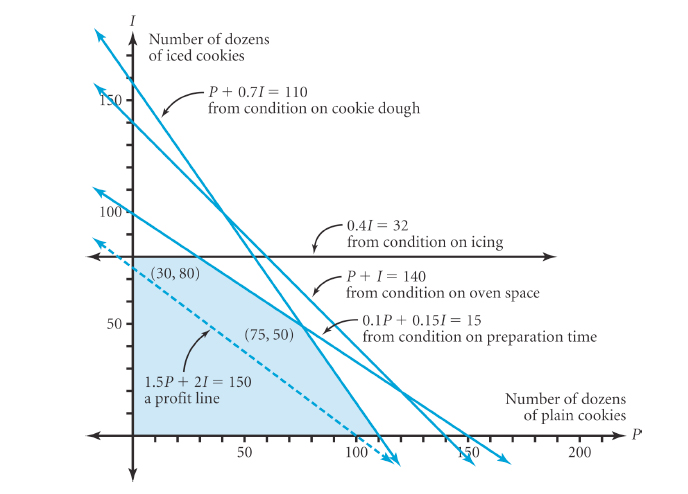Woo Cookie Palace

Welcome to the Business Plan for Abby and Bing Woo's Cookie Palace.
Return to Algebra 2 web page
Executive Summary
Abby and Bing Woo own a small bakery that specializes in cookies. Their shoppe is a locally owned business in Raleigh, NC. Their business is approved by the NC Department of Agriculture to produce and sell baked goods.
The Woos use only wholesome and fresh ingredients in order to ensure that their customers are not consuming processed cookies filled with chemicals or preservatives. Their ingredients are: unbleached flour, unsalted sweet cream butter, all natural semi-sweet chocolate chips, white sugar, natrual cocoa, eggs (from vegetarian fed hens), aluminum free baking powder, baking soda, hormone free milk and pure Bourbon Madagascar vanilla extract.
Products
The Woos make only two kinds of cookies-plain and iced. The iced cookies sell for $7.00 a dozen and cost $5.00 a dozen to make.
Financial Plan
In order to maximize their profit, the Woos need to decide: How many dozens of each kind of cookie (p= plain cookies and i = iced cookies) should they make?
The Woos know that each dozen of their plain cookies requires 1 pound of cookie dough (and no icing), and each dozen of their iced cookies requires 0.7 pounds of cookie dough and 0.4 pounds of icing. The Woos also know that each dozen of the plain cookies requires about 0.1 hours of preparation time, and each dozen of the iced cookies requires about 0.15 hours of preparation time. The Woos' decision is limited by three factors: 1) The ingredients they have on hand-they have 110 pounds of cookie dough and 32 pounds of icing; 2) The amount of oven space available – they have room to bake a total of 140 dozen cookies for tomorrow; and 3)The amount of preparation time available-together they have 15 hours for cookie preparation. These constraints can be expressed mathematically by the following inequalities:
- p + 0.7i ≤ 110
- 0.4i ≤ 32
- p + i ≤ 140
- 0.1p + 0.15i ≤ 15
When graphed, these inequalities form the following feasible region:

This feasible region defines the numerous combinations that fit the Woos constraints. To find the best combination, and maximize the profit, we added a profit line to the graph, seen in the graph below. We slid the profit line up until we isolated the maximum combination.

Recommendation
We slid the profit line up until we isolated the maximum combination, which is 75 plain and 50 iced dozens of cookies. This will generate a profit of $225. The other corner regions will only result in profits of $205 for 30 plain and 80 iced, and $165 profit for making 110 iced and no plain cookies.
We thank you for this opportunity to prepare this Business Plan.
Prepared by:
- Anita Vacation, Financial Manager
- Juana Goto, Creative Manager
- Jess Waite, Research
Top of Page
|